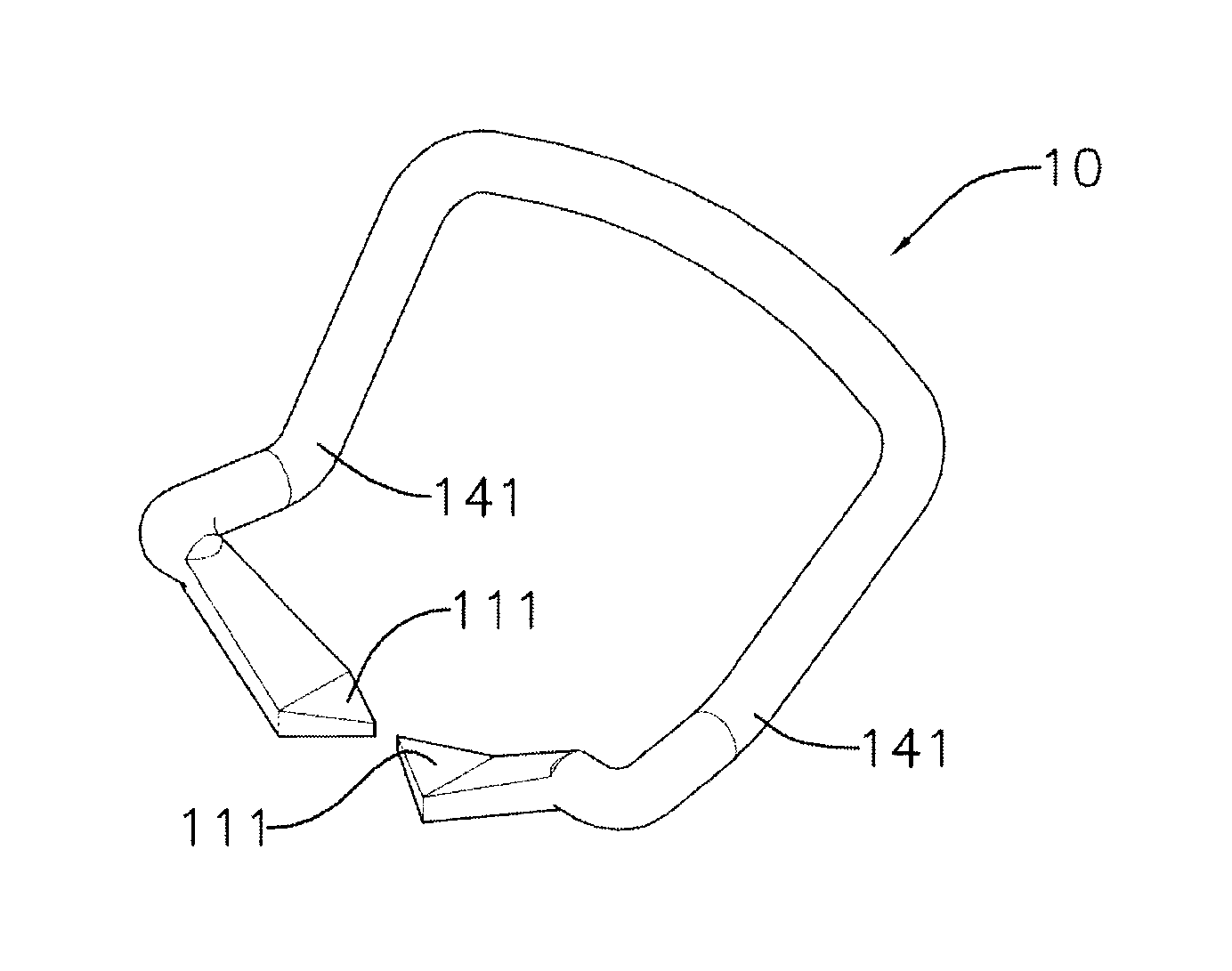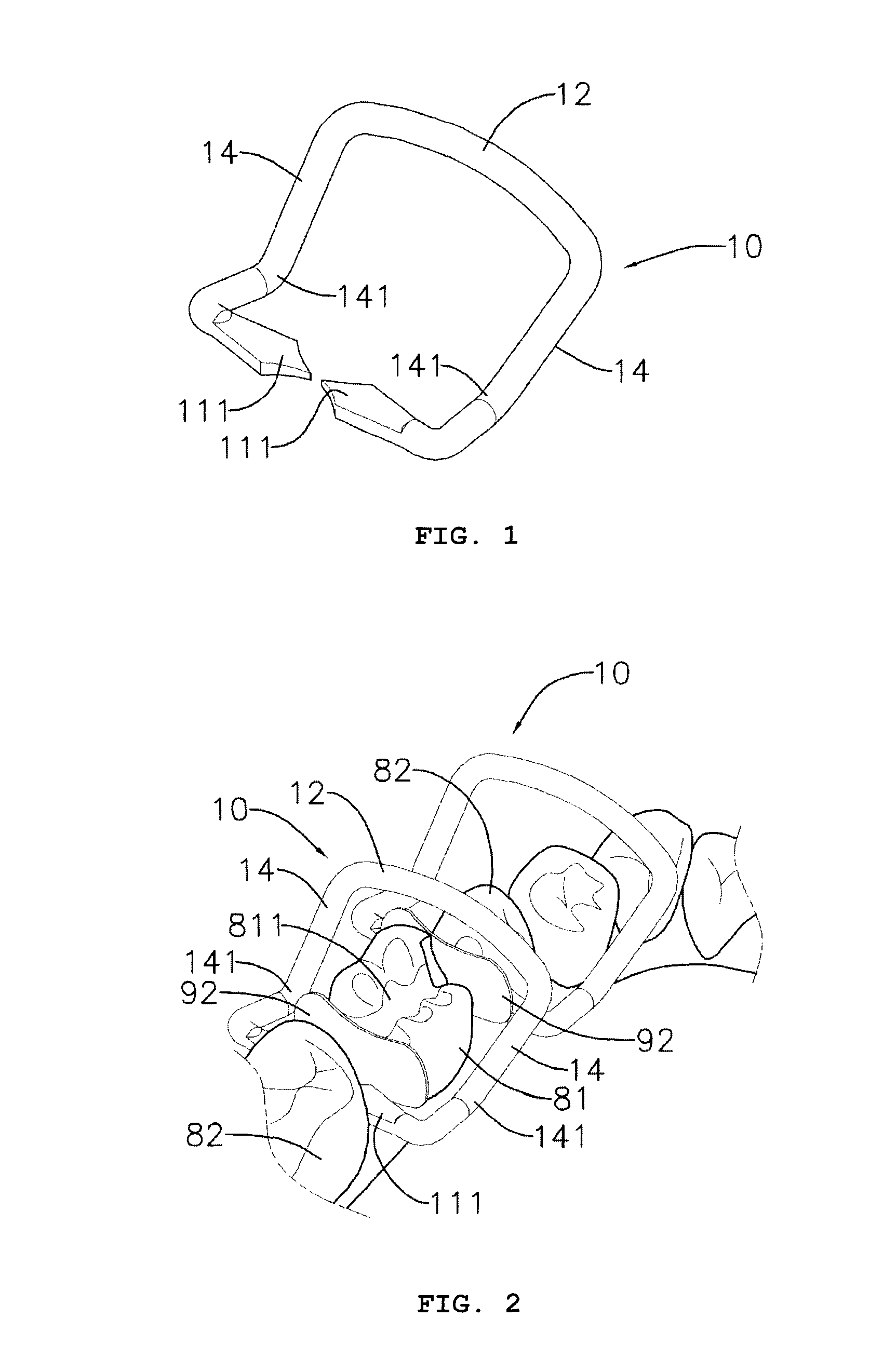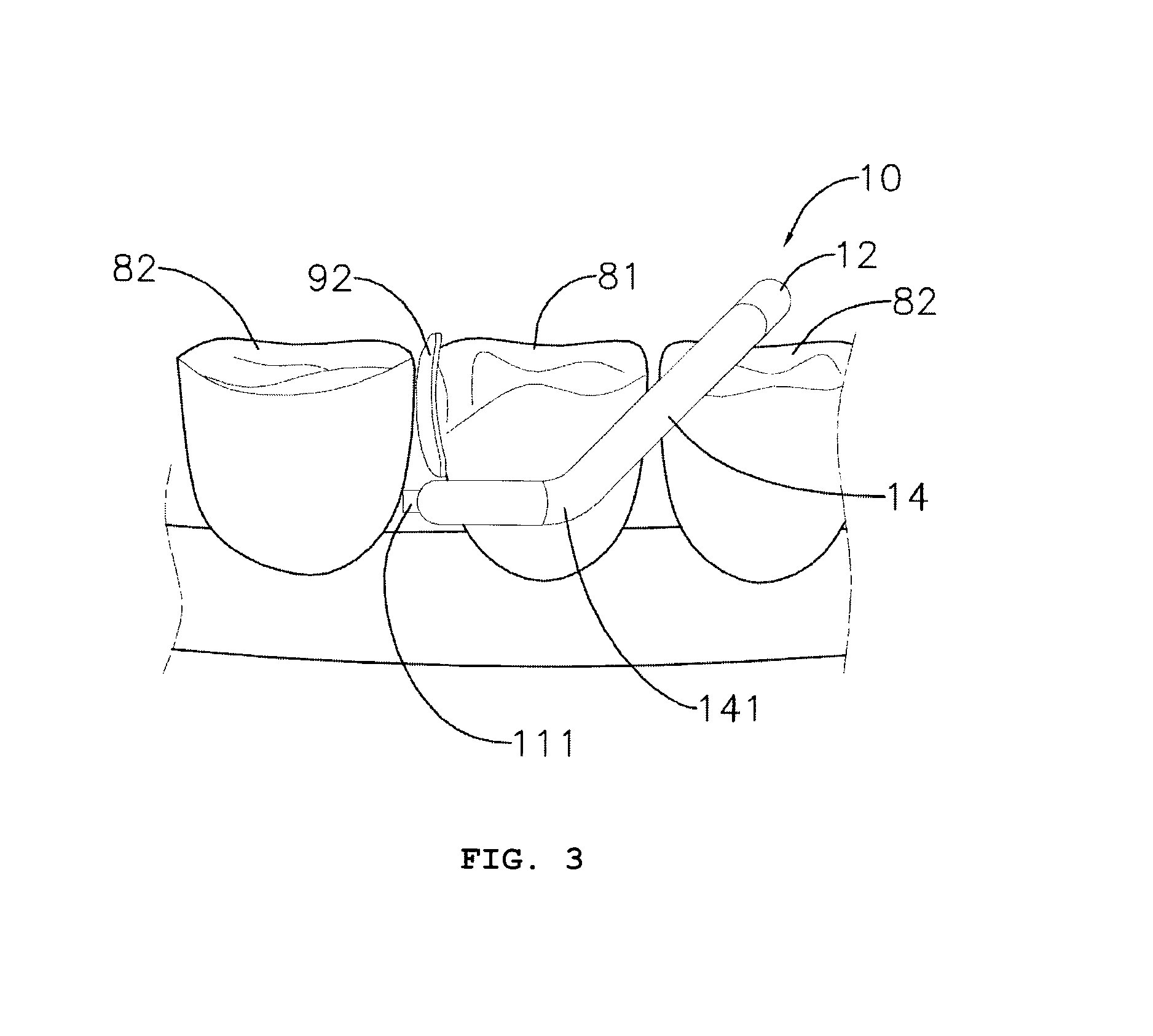Separating ring
a separating ring and ring technology, applied in the field of integrated separating rings, can solve the problems of increasing the time of dental surgery, placing errors, storage and managing numerous wedges, etc., and achieve the effect of convenient fi
- Summary
- Abstract
- Description
- Claims
- Application Information
AI Technical Summary
Benefits of technology
Problems solved by technology
Method used
Image
Examples
Embodiment Construction
With reference to FIG. 1, a separating ring in accordance with the present invention is used to separating a decayed tooth (81) having an approximal surface from at least one adjacent tooth (82) and comprises a body (10) being a resilient open ring. The body (10) is mounted between the decayed tooth (81) and the adjacent tooth (82) and comprises a rear bar (12), two bent side bars (14) and two wedge legs (111). The body (10) may be metal or metal alloys such as but not limited to titanium and its alloys and steel and its alloys.
The rear bar (12) may be wider than the adjacent tooth (82), may be straight or curved and has two ends. The bent side bars (14) are formed on and protrude respectively from ends of the rear bar (12). Each of the bent side bars (14) has a distal end and a proximal end. The proximal end is connected to the rear bar (12). The proximal ends of the bent side bars (14) may be disposed wider than the distal ends of the bent side bars so that when the body (10) is f...
PUM
 Login to View More
Login to View More Abstract
Description
Claims
Application Information
 Login to View More
Login to View More - R&D
- Intellectual Property
- Life Sciences
- Materials
- Tech Scout
- Unparalleled Data Quality
- Higher Quality Content
- 60% Fewer Hallucinations
Browse by: Latest US Patents, China's latest patents, Technical Efficacy Thesaurus, Application Domain, Technology Topic, Popular Technical Reports.
© 2025 PatSnap. All rights reserved.Legal|Privacy policy|Modern Slavery Act Transparency Statement|Sitemap|About US| Contact US: help@patsnap.com



